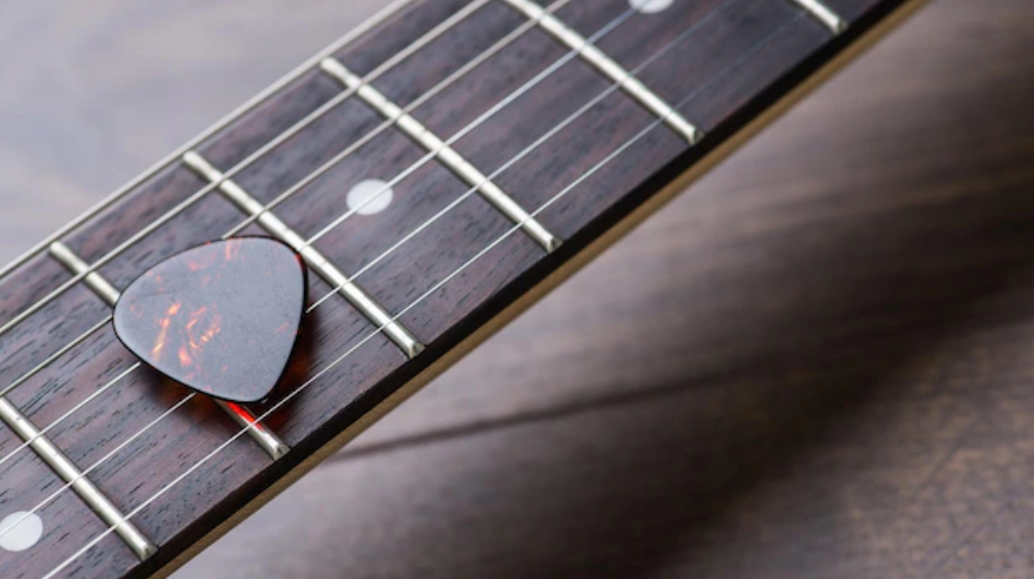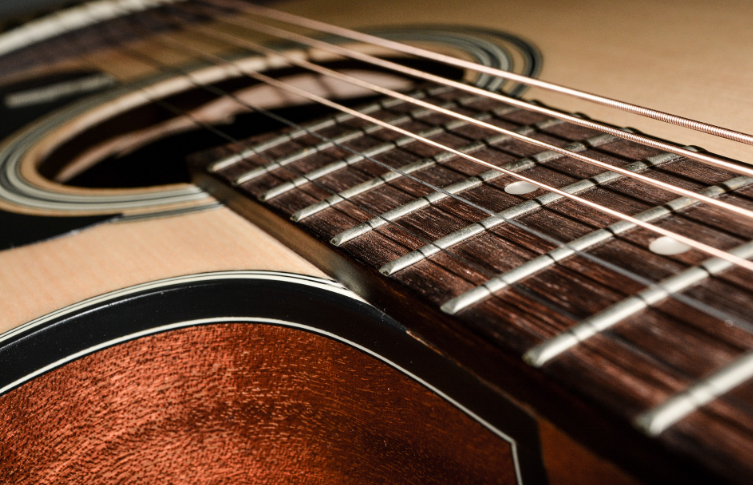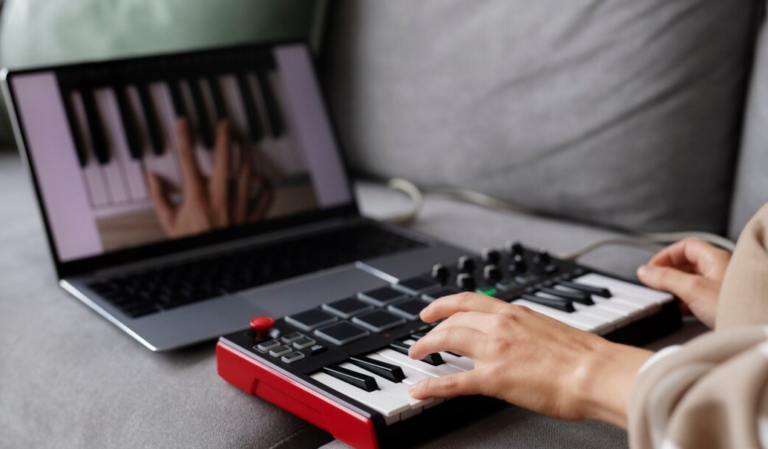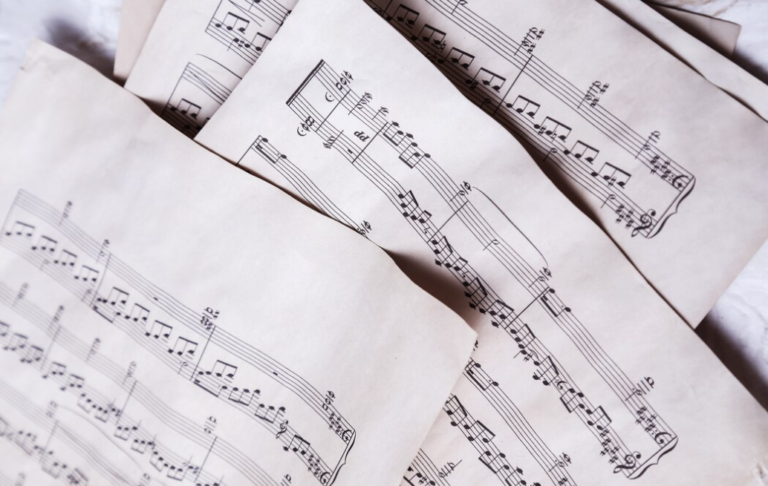The Amazing Sound Of The D Power Chord

At Real Brave, we guarantee progress in learning and here is a comprehensive guide that focuses exclusively on guitar. We will focus on the D Power Chord. If you want more, please email me dan@realbraveaudio.com otherwise this will be way too long! Who has the attention span for that?
The D Power Chord, a nice little 5-chord that beginners can play on the third fret is a must. These 5 chords, characterized by their simplicity and sonic strength, are essential in genres like rock, where they’re often played on electric guitars with distortion. However, their versatility allows them to be effectively used on clean electric or acoustic guitars as well. Found in songs by iconic bands like Metallica to even The Rolling Stones and Taking Back Sunday, the D Power Chord is a fundamental element of guitar playing.
Basics of Guitar Holding and Hand Positioning
Before delving into the specifics of the D Power Chord, it’s crucial to understand the basics of holding a guitar and hand positioning. Proper guitar holding and hand placement are foundational skills that ensure comfort and prevent strain during playing. A relaxed posture with the guitar securely positioned and hands comfortably placed on the fretboard not only facilitates easier chord formations but also enhances the overall playing experience.
Anatomy of the D Power Chord
At its core, the D Power Chord is a stripped-down version of a full chord, typically consisting of the root note and the fifth. For instance, the D Power Chord played from the 5th fret includes the notes D, E, D (not a dud, but a DAD!) It’s important to note that this chord shape doesn’t include the minor third (F) or the major third (F#), making it neither a D Major nor D Minor chord, but rather a versatile formation that can be adapted to different musical contexts.
Step-by-Step Guide on Fingering the D Power Chord
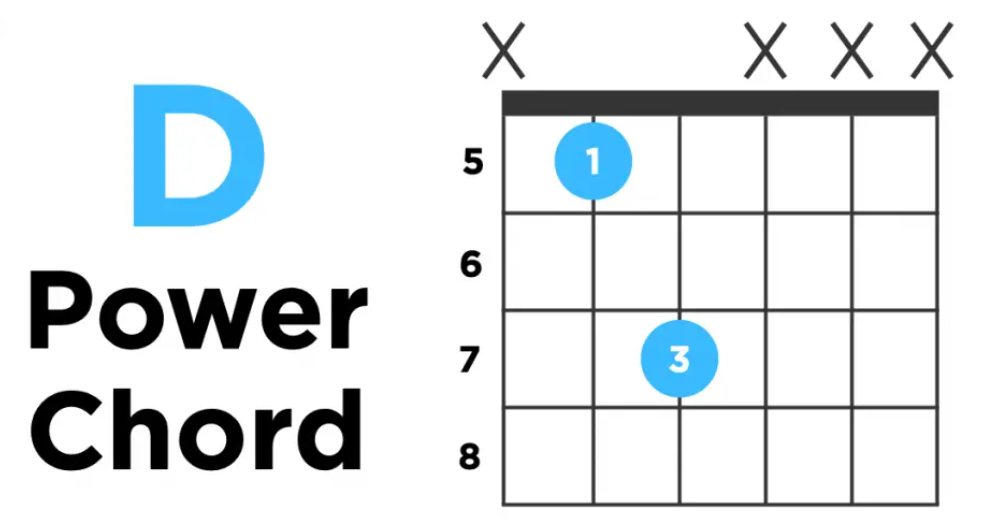
D Power Chord at the 5th Fret: The Dad of all Power chords
- Place your fingers on the 5th fret, ensuring that the notes D, A, and D are held.
- Avoid playing any open strings to maintain the integrity of the power chord.
D Power Chord at the 10th Fret
- Similar to the 3rd fret, position your fingers on the 10th fret. From the E string
- The chord will again consist of the notes D, A, and D, with no open strings played.
These chord shapes are quintessential to the D Power Chord and represent the fundamental structure of power chords on the guitar.
Technique Tips: Mastering the D Power Chord with Modern Techniques
First off, distortion is your guitar’s best buddy. It’s like the secret sauce that makes your D Power Chord sound super cool. But watch out! Too much distortion can make your chord sound like a messy kitchen. Stick to the important notes – the root (D) and the fifth (A). This keeps things sounding neat and powerful. Mastering the D Power Chord demands not just an understanding of its structure but also proficiency in specific playing techniques, especially when incorporating modern elements like distortion.
Distortion, a staple in contemporary music genres, can dramatically enhance the sonic character of a power chord. Renowned guitarists like John Mayer and Ed Sheeran often employ distortion to add a unique texture to their music. However, it’s crucial to use distortion judiciously, as overuse can lead to a congested, unclear sound.
The art of playing the D Power Chord lies in emphasizing the essential notes – the root (D) and the fifth (A). This focused approach helps in achieving a robust and clear chord sound, which is particularly important in genres like rock and metal, where the guitar often drives the melody. Modern guitarists, such as Jack White and Dan Auerbach, have mastered this technique, using minimalistic chord structures to create powerful and memorable riffs.
Moreover, the technique of palm muting, often used by guitarists like Mark Tremonti, can add a percussive quality to the D Power Chord, making it more pronounced in a mix. This involves resting the side of your picking hand on the strings near the bridge while playing, which helps in controlling the sustain and resonance of the chord.
Another key aspect is the control of dynamics. Dynamic playing, as demonstrated by guitarists like Gary Clark Jr., involves varying the intensity of your strumming or picking to create emotional impact. This technique can make the D Power Chord sound more aggressive or softer, depending on the musical context.To further refine the sound, consider the use of guitar picks of different thicknesses. A thicker pick can offer more control and a fuller sound, which is beneficial when playing the D Power chords with distortion. Guitarists like Slash often experiment with different pick gauges to achieve their desired tone.
Mastering the D Power Chord is about more than just finger placement; it’s about understanding and integrating these nuanced techniques. By observing and incorporating methods from modern guitar legends, you can elevate the simple power chord into a dynamic and expressive tool in your guitar playing arsenal.
Historical Context: The Rise of the D Power Chord
The D Power Chord’s story is deeply entwined with the evolution of rock and metal. In the early days of electric guitar, musicians faced a challenge. The chords they used on acoustic guitars just didn’t sound right with electric guitar distortion. They were too complex, too cluttered. The notes would blur together, losing their punch and clarity.
Then came the 1960s, a time of musical revolution. Guitarists started simplifying chords to cut through the fuzz and roar of distortion. They stripped chords down to their bare essentials – just the root and the fifth. This was the birth of the power chord, a raw, powerful sound that perfectly fit the energy of rock and roll.
These power chords, including the D Power Chord, became the backbone of rock and metal. Bands like Led Zeppelin and Black Sabbath crafted iconic riffs using these simple yet effective chords. The power chord was more than just a musical technique; it was a statement, a rebellion against traditional music norms.
It wasn’t just about the sound. The power chord’s simplicity allowed guitarists to move quickly across the fretboard, playing faster, louder, and with more intensity. This freedom unleashed a new era of guitar playing, inspiring generations of musicians.
Today, the D Power Chord is a symbol of rock music’s raw power and simplicity. It’s a testament to the creativity of musicians who transformed the limitations of technology into a new musical language. And it continues to be a fundamental tool in the arsenal of guitarists across the world, fueling the fire of rock and metal music.
Music Theory Behind Power Chords
From a theoretical perspective, power chords are fascinating because they are not full chords in the traditional sense. A traditional triad is made up of three notes, such as a major triad consisting of the root, third, and fifth. However, a power chord omits the third, leaving only the root and the fifth.
This structure makes the chord ambiguous, as it neither confirms nor denies being major or minor. This simplicity and ambiguity are what make power chords so versatile and widely used in various musical styles. They fit well both in major and minor contexts, making them a universal tool for guitarists.
In practice, the D Power Chord can be used in a myriad of ways across different genres. The ambiguity of the chord makes it highly adaptable, fitting into both major and minor contexts. This adaptability allows musicians to use the D Power Chord in various musical settings, from hard rock to pop. Understanding this versatility is key to effectively incorporating the D Power Chord into your playing.
Advanced Techniques and Variations
While power chords are simple and effective, there’s always room for innovation and variation. One way to break out of the monotony of power chords is to experiment with removing different notes from the traditional triad. For example, instead of omitting the middle note (as in a power chord), removing the first or last note can lead to new and interesting sounds. These variations offer a way to enrich the harmonic content of your playing and add depth to the simple structure of power chords. This approach allows for a broader range of expression and creativity in guitar playing.
